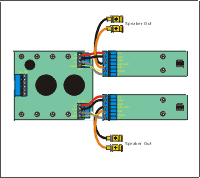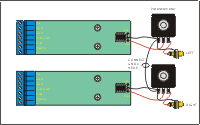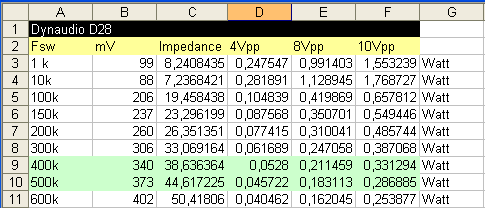Ask technical questions, discuss hifi, show pics of your gear: Join us on


Shopping Cart |

Accepted..
Cookie information:
We only use a session cookie. This cookie stores your shopping basket while your are navigating on our pages. The moment you leave NewClassD.com, the session cookie is destroyed, and erased. | | |
NCD4 Connections
Please note NCD4 is now obsolete, and we no longer sell this module.
NO-NO's
We put the No-No's first, so you are sure to see them.

Click to Enlarge!

Click to Enlarge!
| Many DIY'ers want to do this, for some reason, even if it is logically and electrically wrong.
Connecting input GND to the minus input is a common misconception, of unknown origin. Don't .. it will NOT work. The minus input is an active input (just like the plus input). When you connect GND to an active input you will get a lot of humming and noise, and may destroy your speakers. The amplifier however is safe, as the safety processor has been designed to take care of this connection fault.
On some amplifiers it is actually allowed to use the minus input as GND, but that only works, because these amplifiers - unlike NewClassD - use a passive minus input.
Recommend to connect the input GND to .... input GND instead.
|
Important!
Never re-adjust the trimmers on the module, as this may damage the module in case of shoot-through.
Never use the module without proper heat sink attached.
Never change feedback mode while the amplifier is plugged into the power supply module. Not even when mains is not connected, as a substancial charge on the capacitors may destroy the module.
Never charge the power supply before inserting the plugs for the amplifier modules. You can accidently do this by connecting the powersupply with transformer to Mains Voltage, without any amplifier modules attached.
A charged power supply can hold power for months, and therefore MUST be discharged (All 3 voltages - through a 50 - 100 Ohms resistor) before connection to the modules. (Check with Voltmeter for < 5V). Once the modules are connected, charging and discharging is of course allowed at random.
Never connect the In-Circuit programming plug for the microprocessor to anything. This may disable the protection, or even damage the computer chip.
|
Power Supply Connections.

Click to Enlarge!
| The interconnections between the modules and the power supply is very simple. Use short wires, for best sound quality, 5 cm or 2' is enough in most cases. +, - and GND should be heavy duty wire, like 2.5 sqmm or 12 AWG. Vgate can be just thin mounting wire. All connections are pluggable for easy servicing, and refitting. Remember to fasten the wires tightly in the plug, to ensure they don't fall out.
|
Notes on using NewClassD together with Soft Start circuits: The NewClassD module takes a 'snapshot' of the voltages at startup. If the voltages later starts increasing, the module will see this as an error condition. You must ensure your soft start switches on full voltage before the NewClassD module starts up. (Around 4 seconds).
Another solution is to initiate the Gate Drive voltage only after the soft start circuit is kicking in.
Input Connections.

Click to Enlarge
| Basic connection of RCA phono plug. The minus terminal does not need to be connected to anything, but it may be connected to the GND pad. Here shown is the normal correct phase connection. If you prefer negative phase, you can use the In- terminal for the red wire, instead of the In+ terminal. Note: Never connect the GND (black) wire to the In- terminal. This can cause bad things...
|

Click to Enlarge
| Here connection for fully balanced input, using an XLR connector (Female).
|

Click to Enlarge
| Connecting a 10k LOG potentiometer will form a volume control, also called passive preamplifier. It is recommended you place the potentiometer inside the amplifier enclosure, rather than outside, simply because the wires between the potentiometer and amplifier are sensitive to hum and noise injection. Here is the MONO configuration, like used in a mono block.
|

Click to Enlarge
| ...And here is the Stereo version of the passive preamplifier setup. Note you should connect the two GND's on the potentiometer, this way you avoid different GND coupling between the amplifiers depending on position of the volume. You will hear GND coupling as a weak tone shifting pitch far in the background, when you change volume level. But hereby avoided with the GND connection (Between L and R GND).
|
FAQ
Will the switching residuals of the NCD amplifier damage my tweeter?
Any Class D amplifier has a switching residual signal on the output terminals. This signal is present at all times, and in the range of 4-500 kHz, and 4 - 8 Vpp. This will cause some heat to be dissipated in the tweeter voice coil. How much heat you can see below, based on a typical tweeter (Dynaudio D28).

Take a look on the datasheet of the D28 [here].
The D28 is rated to 130W Long Term power handling, and that should translate to around 6-7 Watts of thermal power handling capability for the unit. So as you can see the residual switching loss of 0,2 - 0,3 Watt is nothing to worry about.
|
|
|